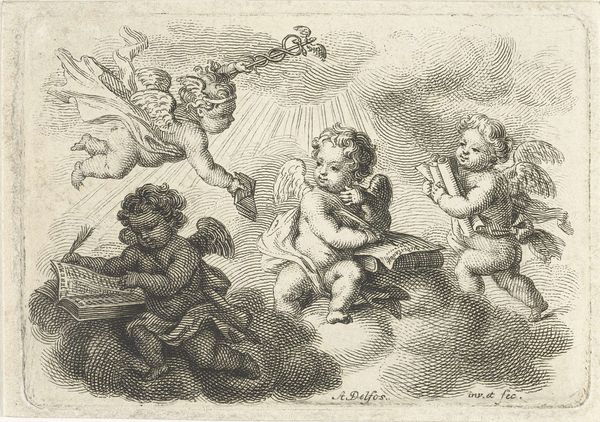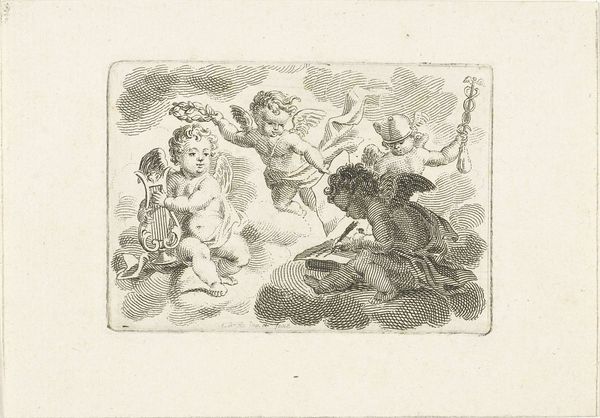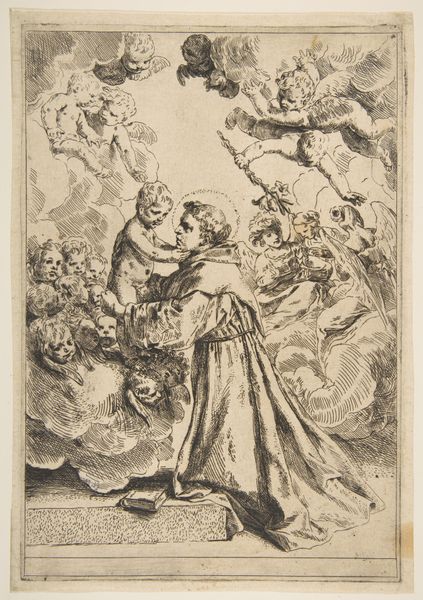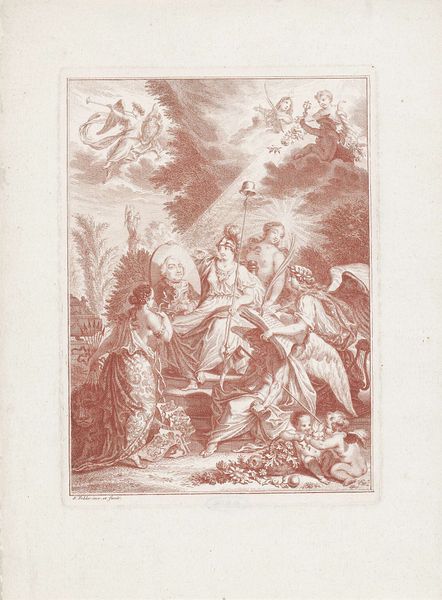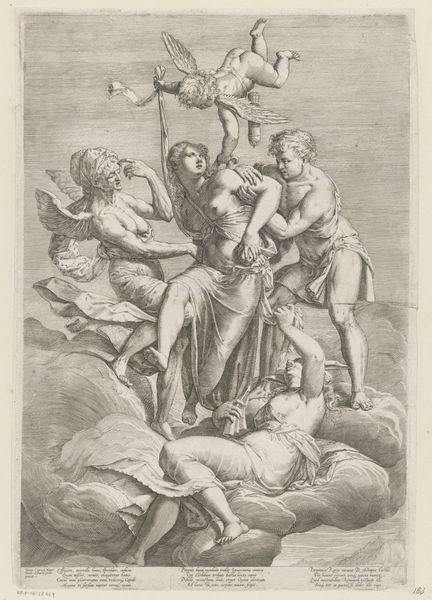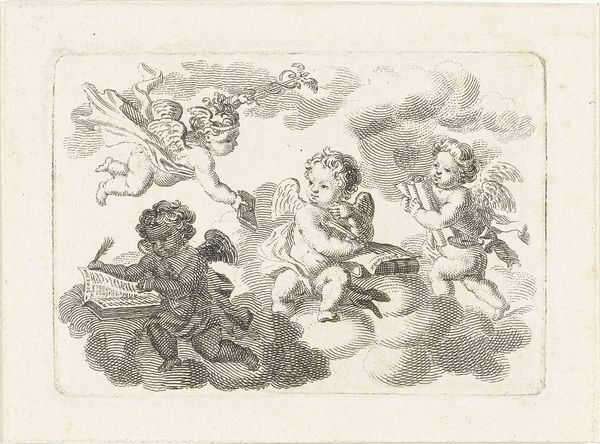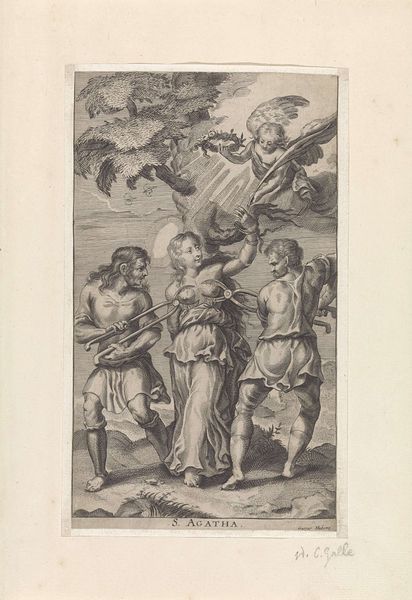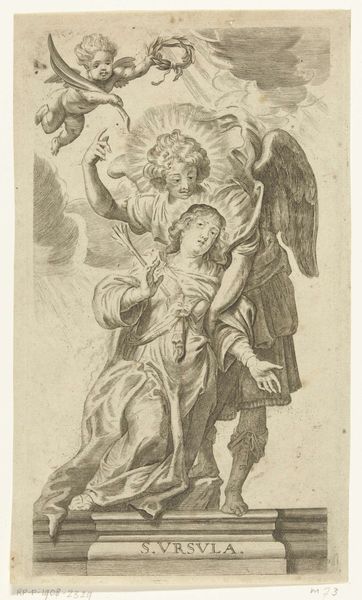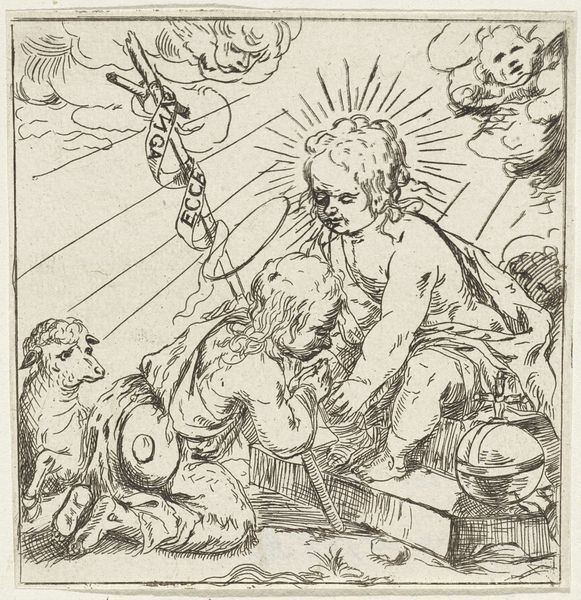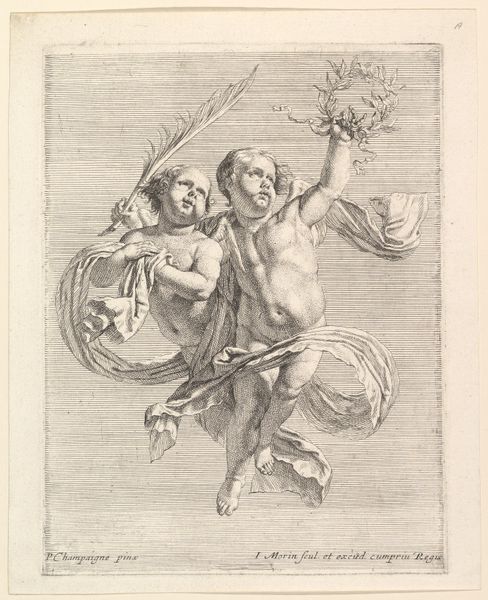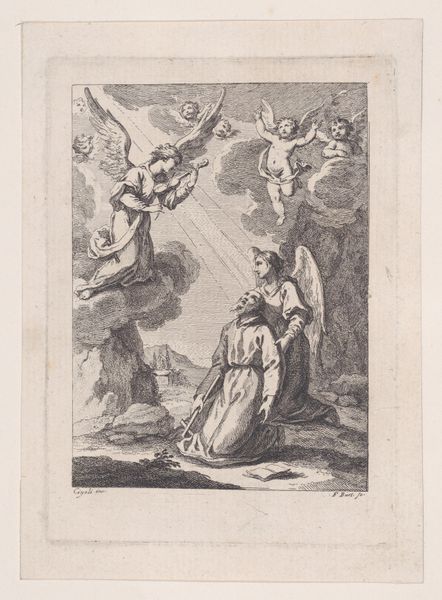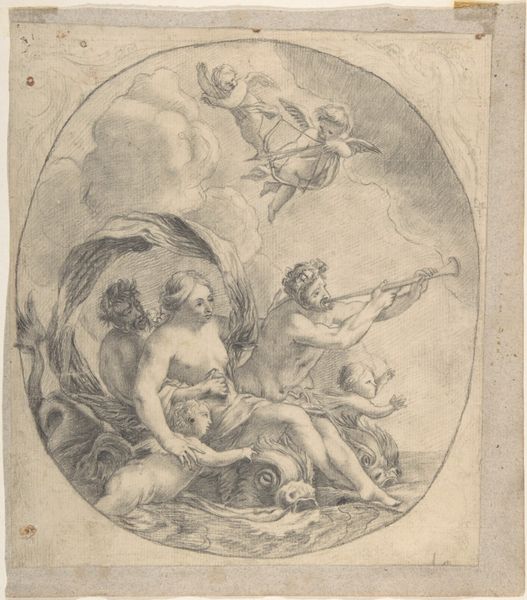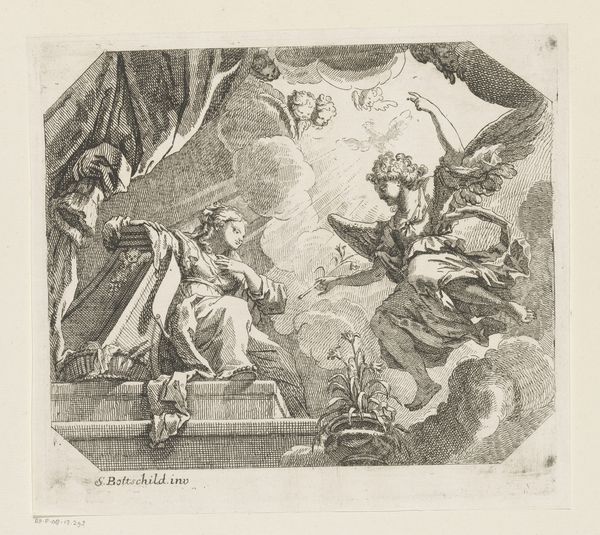
Titelvignet met vier putti met lier, bloemenkrans, helm en maskers 1764 - 1765
0:00
0:00
abrahamdelfos
Rijksmuseum
#
light pencil work
#
quirky sketch
#
pencil sketch
#
personal sketchbook
#
sketchwork
#
pen-ink sketch
#
sketchbook drawing
#
sketchbook art
#
fantasy sketch
#
initial sketch
Dimensions: height 79 mm, width 84 mm
Copyright: Rijks Museum: Open Domain
Curator: Immediately, I see such lightness of being here. Look at how the cherubic figures float. Is it just me, or does it give off a playful air, as if these putti are in on some celestial joke? Editor: I find this work charming, actually. This is a piece by Abraham Delfos entitled "Titelvignet met vier putti met lier, bloemenkrans, helm en maskers", dating back to around 1764-1765. It is currently held at the Rijksmuseum. Curator: Helmets, floral wreaths, lyres—such symbolic props! Considering these motifs, are they simply decorative, or do they reveal something deeper? What could it tell us about the socio-political values of the era? Editor: These emblems, seemingly innocuous, were deployed frequently in Delfos’ time to communicate status. Take note of how each is related to a cultural touchstone: war, music, revelry. To present all at once suggests perhaps that life at the time balanced pleasure, strength and achievement. This would likely be viewed positively given the values placed on national image and stability at the time. Curator: Your perspective frames the scene with history, while I’m drawn to the almost archetypal quality of the putti. The wreath feels less about political image and more about universal symbols, hinting at celebration. Aren’t we perpetually seeking such festive occasions to mark key life passages and maintain the human spirit? These sorts of symbols do that. Editor: That's a compelling angle—the universality embedded within specific historical contexts. I wonder then: do we, in presenting it today in the Rijksmuseum, subtly recast that original balance of war and revelry in a new symbolic context relevant to contemporary audiences? Curator: Absolutely, institutions like the Rijksmuseum transform historical objects into modern interfaces through which the present converses with the past. The museum thus serves to recast images into enduring cultural narratives. Editor: A fine point. Understanding the art, the artist and ourselves--the past in the present! That really changes the way I consider this work.
Comments
No comments
Be the first to comment and join the conversation on the ultimate creative platform.
